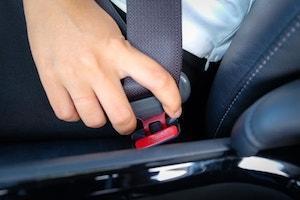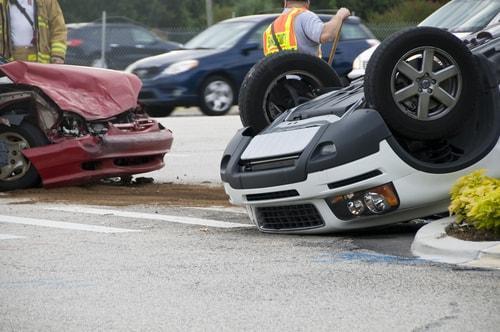Follow Us |Facebook
Call or Text for a Consultation
Recent Blog Posts
Personal Injury and the Cost of Winning
 Getting a favorable judgment in a civil trial is a daunting task. Depending on the type of litigation you were involved in, it can also be a very expensive endeavor. Many people are aware that you can recover damages for medical bills, lost wages, and pain and suffering. However, there are other avenues of compensation that are less readily known and include the following:
Getting a favorable judgment in a civil trial is a daunting task. Depending on the type of litigation you were involved in, it can also be a very expensive endeavor. Many people are aware that you can recover damages for medical bills, lost wages, and pain and suffering. However, there are other avenues of compensation that are less readily known and include the following:
- Fees for the subpoena of witnesses;
- Statutory fees for witnesses; and
- Fee’s associated with deposition administrative tasks.
What Other Costs May I Be Entitled To?
A skilled and experienced Orland Park personal injury attorney would be able inform you of any other costs to which you may be entitled. Different courts in Illinois have different rulings about what a prevailing party may recoup by way of court costs and fees.
Seat Belts Really Do Save Lives
 One of the simplest—yet most effective—ways to protect yourself from injuries in the event of a car crash is to use your seat belt. Using a seat belt reduces the risk of fatal injury to people in the front seat of a passenger vehicle by 45 percent. People riding in light trucks who buckle up reduce their risk of a fatal injury by 60 percent. Yet thousands of people are killed each year because they did not buckle up.
One of the simplest—yet most effective—ways to protect yourself from injuries in the event of a car crash is to use your seat belt. Using a seat belt reduces the risk of fatal injury to people in the front seat of a passenger vehicle by 45 percent. People riding in light trucks who buckle up reduce their risk of a fatal injury by 60 percent. Yet thousands of people are killed each year because they did not buckle up.
The National Numbers
According to national statistics, just under 36,000 victims were killed in crashes in 2015, and almost half of them—48 percent—were not wearing a seat belt. Crash studies have determined that almost 3,000 of those victims would have survived the crash if they were wearing seat belts. These studies also determined that almost 14,000 people who were involved in car crashes in 2015 did survive because they made sure they had on their seat belt.
FDA Warns of Link Between Breast Implants and Cancer
 A new statement from the Food and Drug Administration (FDA) is warning women of a link between breast implants and a certain type of cancer. According to national statistics, approximately 300,000 women receive breast implants each year, making the surgery one of the most popular plastic surgery procedures in the country.
A new statement from the Food and Drug Administration (FDA) is warning women of a link between breast implants and a certain type of cancer. According to national statistics, approximately 300,000 women receive breast implants each year, making the surgery one of the most popular plastic surgery procedures in the country.
According to the warning issued by the FDA, as of February 1, 2017, they had received 359 reports of anaplastic large cell lymphoma (ALCL), which is cancer of the immune system, that were linked to breast implants. In nine of the reports, the women had died. The majority of the reported cancers—203—were women who had been implanted with textured implants. The other 28 women had received smooth implants.
The FDA also reported that 312 of the reports specified what type of fill was used in the implants of the women who developed ALCL. Silicone gel was used in 186 of the reports and saline was used in 126 of the reports.
Safety Tips for Cyclists
 Spring has officially arrived and that means more outdoor activity for Illinois residents. One of the most popular outdoor activities is bicycling, both for pleasure and fitness. Many cyclists also use their bikes as a primary vehicle for getting around in the warm weather months. And although bike riding offers many health and pleasure benefits, it can also be dangerous trying to maneuver around busy city streets and suburban roads which are often populated with distracted and impatient vehicle drivers.
Spring has officially arrived and that means more outdoor activity for Illinois residents. One of the most popular outdoor activities is bicycling, both for pleasure and fitness. Many cyclists also use their bikes as a primary vehicle for getting around in the warm weather months. And although bike riding offers many health and pleasure benefits, it can also be dangerous trying to maneuver around busy city streets and suburban roads which are often populated with distracted and impatient vehicle drivers.
According to the National Highway Traffic Safety Administration, there were 736 people killed while riding bicycles last year, an increase from 2015 when 726 people were killed. Another 44,000 bicyclists were injured. The average age of cyclists killed is 45-years-old, and 88 percent of victims were male. Not surprisingly, more than 70 percent of fatal crashes occurred in urban areas
New AAA Survey Reveals Alarming Statistics of Dangerous Driving Behaviors
 National statistics reveal that in 2015, more than 35,000 people were killed in traffic accidents—an increase of more than 7 percent. This is the largest year-to-year increase in 50 years.
National statistics reveal that in 2015, more than 35,000 people were killed in traffic accidents—an increase of more than 7 percent. This is the largest year-to-year increase in 50 years.
Despite all the attempts to educate people about the importance of safe driving, a new survey reveals that too many drivers on the roads continue to engage in risky and dangerous driving behaviors that often leave to motor vehicle accidents. This was particularly true for millennial drivers—those between the ages of 19 to 24.
The survey was conducted by the American Automobile Association (AAA) and asked drivers about the behaviors they may have engaged in within the past 30 days of the survey. The dangerous behaviors included texting and driving, speeding, and running red lights.
Texting and Driving in Prior Thirty Days
When it comes to using texting while we are behind the wheel of a car, an alarming number of drivers from all age groups admitted to engaging in what is a proven dangerous driving behavior. Surprisingly, teen drivers came in at number four, with fewer teens texting and driving than their older counterparts.
New Illinois Law Allows Motorcycles to Add Blue Rear Lights
 Pedal bikes are not the only form of transportation that received new law implementations on January 1, 2017. Updates to the Illinois Vehicle Code were also put into place—updates that some are calling the “blue light” bill.
Pedal bikes are not the only form of transportation that received new law implementations on January 1, 2017. Updates to the Illinois Vehicle Code were also put into place—updates that some are calling the “blue light” bill.
Motorcyclists are now permitted to be equipped with a blue light or multiple lights. These lights can be located on the rear of a motorcyclist's bike as part of his or her rear stop lamp or lamps.
This new law—HB 4105—was put into effect as a means to try and lessen the number of motorcycle accidents that occur annually in the state of Illinois. Because riders are now allowed to add blue lights on the back of their motorcycles, a contrast of colors with the red and blue lights will occur. This variation of the contrasting colors will help to make the brakes more visible for fellow drivers on the road. When a motorcyclist pushes on his or her brakes with the addition of the blue rear light, those driving behind the motorcyclist will be more likely to notice the contrasting colors clearer and faster.
Preventing and Surviving Rollover Accidents
 Rollover accidents can happen in any vehicle, in any weather, and under any circumstances. However, they are more common in certain situations and in specific vehicles. You can improve your chances of surviving such accidents by understanding these situations, and knowing which vehicles may be problematic. The following information explains further.
Rollover accidents can happen in any vehicle, in any weather, and under any circumstances. However, they are more common in certain situations and in specific vehicles. You can improve your chances of surviving such accidents by understanding these situations, and knowing which vehicles may be problematic. The following information explains further.
How Serious Is the Problem?
It is estimated that only about three percent of all serious crashes involve the rollover of a vehicle. However, these accidents account for about 30 percent of all traffic accident fatalities. Those at the greatest risk are those who are unbelted since rollovers can result in one being tossed throughout the cabin or ejected from the vehicle. Yet even belted drivers can suffer fatality.
Understanding Why Rollovers Happen
Rollovers are most likely to happen in vehicles that are considered “top-heavy.” These are vehicles with a higher center of gravity, like SUVs, minivans, and pickup trucks. Tire grip is sometimes a factor, particularly when tire tread is low. Avoid this by ensuring you keep a careful eye on tire tread.
How Social Media Can Affect Your Personal Injury Case
 In today’s society, social media has made it easy for anyone that has internet access to find out personal information with just a few clicks of a mouse. Once you post, comment, or send something on any social platform, it is out there for the world to see. Most of the time, the only people that are paying close attention to what you share online are your friends and family. However, there may come a time when you choose to share important information about a personal injury case and the wrong person sees it and makes comments that can affect the outcome of your case.
In today’s society, social media has made it easy for anyone that has internet access to find out personal information with just a few clicks of a mouse. Once you post, comment, or send something on any social platform, it is out there for the world to see. Most of the time, the only people that are paying close attention to what you share online are your friends and family. However, there may come a time when you choose to share important information about a personal injury case and the wrong person sees it and makes comments that can affect the outcome of your case.
The Evolution of Social Networks
Over the last decade, a lot of changes have happened regarding social networks. They have created policies and procedures that are made to validate certain comments and disclose confidential information. If necessary, in court, the judge may rule that a claimant or plaintiff must disclose their social media login information if a specific request is made. Because of this, most social channels have created methods for people to download their full profile history. According to the Snapchat transparency report, between the dates of November 1, 2014, and February 28, 2015, the company received 375 requests for data on 666 user accounts in the United States. This just further shows that publishing this type of personal information on social media does not offer much help to a claim.
Determining Liability for a Slip and Fall Accident
 With the winter weather here, Illinois can become icy this time of year which means slippery streets. If you were to slip and fall on someone’s property, the owner may become responsible for your accident. However, there are some instances when the property owner is not held accountable for your injuries. Take precautions this year by understanding some important questions you may decide to ask if you are injured in a slip and fall accident.
With the winter weather here, Illinois can become icy this time of year which means slippery streets. If you were to slip and fall on someone’s property, the owner may become responsible for your accident. However, there are some instances when the property owner is not held accountable for your injuries. Take precautions this year by understanding some important questions you may decide to ask if you are injured in a slip and fall accident.
Who is responsible for my injury resulting from a slip and fall accident?
Just because you fall on someone’s property does not mean that they are always responsible for the accident. There may be a number of reasons as to why you fell that have nothing to do with the owner. Yes, it could be the property owners fault but if it is not their fault then it might be yours. This is important to keep in mind when determining liability. Remember, if the owner of the premise caused the spill or other slippery or dangerous surface then they are legally responsible for the injuries you suffered.
New Laws For 2017
Here are some new Illinois laws that went into effect on January 1, 2017…
Criminal Damage to Property Class Level
In 2017, the General Assembly raised the minimum threshold amount of property damage as it relates to class levels. Any damage to property below $500 is a Class A Misdemeanor, while damage above $500 is a Class 4 Felony. Previously, any criminal damage to property exceeding $300, in most circumstances, would constitute a Class A Misdemeanor, which is punishable by up to 364 days in county jail and anything over $300 would have become a Class 4 Felony, punishable with prison time between 1-3 years and fine of up to $25,000.
Juvenile Law Changes
New laws impacting juveniles (17 years old or younger) went into effect on January 1, 2017. One law that went into effect involves the classification of certain offenses. Under certain circumstances, Criminal Trespass to a Residence, Criminal Damage to Property, Criminal Damage to Government Supported Property, Criminal Defacement of Property, Disorderly Conduct and Obstruction of Justice constitute a Class 4 Felony, which carries penalties of 1-3 years in the Illinois Department of Corrections and a fine of up to $25,000.00. However, if the above felony offenses are committed by an individual 17 years, the individual is now facing a Class A Misdemeanor.




